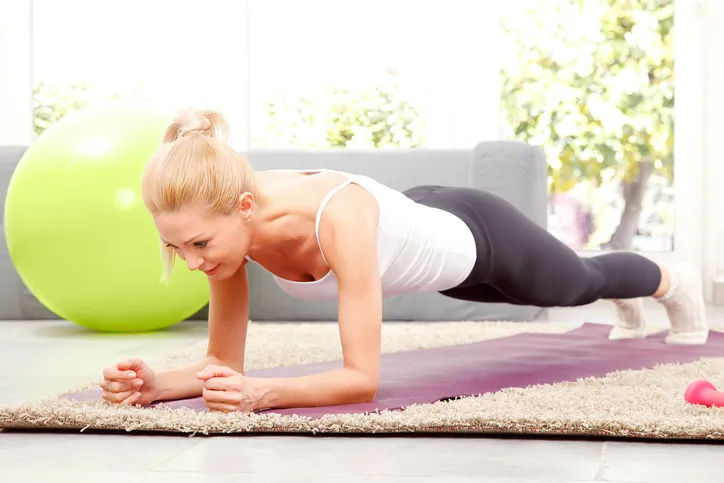
Not Just Any Exercise
While “any exercise” is better than none, there is a world of difference when it comes to the benefits derived from different types of exercise.
Gentle exercises can be very valuable for certain limited purposes. You might choose to walk to spend time with friends, or to get yourself a little bit of early morning sunlight—key to a healthy circadian rhythm and a good night’s sleep. You might swim laps for a joint-gentle form of movement, particularly if you have a saline pool for immersion. Yoga can be done very gently and enhance your flexibility. You might really enjoy a long walk or swim or dancing, great: enjoy!
Grand Benefits of Exercise
Contrary to advice that would reward you for gentle exercise forms, it is becoming clear that for you to reap the grander benefits of exercise you must find a safe way to lift heavy weights.
What do I mean by grand benefits?
- Longer health span
- Improved cognition
- Bone health
- Cardiovascular health
- Reduced cancer risk
- Improved metabolic markers (reversal of type 2 diabetes)
Which are usually all the main reasons people push themselves to exercise. I’m all about being practical, so let’s divvy up the rest of this article into two sections: the evidence and the how-to’s.
The Evidence for Weight-Lifting
We are all more interested in health span—those years spent feeling healthy—than life span. It is obviously of far greater value to be mentally and physically strong in our golden years, and of lesser value to simply endure them, sitting and staring in confusion. Stark alternatives, I would say.
Our health span turns out to be dependent on healthy muscles. Our muscles and bones spend the first three decades of life growing in size and strength, with no particular intention to support that process. Eat and move around and your body gets stronger, until sometime in your 30’s when it takes some effort to reverse that physiological tendency to lose strength. It’s well accepted that physically inactive folks lose between 3-5 percent of their muscle mass every decade and the loss accelerates in your mid 60’s. Age-related sarcopenia LINK is a significant cause of debility and injury in older folks, and the stakes are huge.
Brain Function: A recently released study found a strong association between sarcopenia (alone or in combination with obesity) and lowest performance in cognitive testing. The study suggests that sarcopenia correlates with loss of executive cognitive function. We’ve known for some time that strength training enhances brain function in important ways, for those with mild cognitive impairment.
Bone Health: Second only to loss of mental sturdiness and independence, the price paid for a fracture in a major bone is huge. Age-related loss of hormones (estradiol and testosterone) accelerates loss of bone, through a process called bone resorption. Muscular contraction, especially against resistance, is a key instigator of bone rebuilding. With proper diet, supplements and weight-lifting, osteoporosis is not a dead-end street: bone can be regenerated.
Cardiovascular health: Ah, the famous J-shaped curve. Imagine a graph with a peak at the far left, then a steady decline into a wide valley that slowly rises to another peak at the far right. The peak at the far left is death rates from cardiovascular disease in older women who do no strength training. The long valley of reduced death rate represents those women who did weight-type exercises for more than one, but less than 150 minutes a week. The peak at the far right is an increased death rate in women pumping iron more than 150 minutes a week. Clearly the sweet spot is about 30-90 minutes a week!
Muscles Fight Cancer! Dr. Colin Champ recently reviewed the evidence for the role of improved muscle mass in resisting and recovering from cancer! Having a hefty muscle mass confers a 40% reduction in cancer risk, whether or not that strength is in a lean or a chubbier body. Various mechanisms contribute to the effect, from reduced insulin resistance (lower levels of sugar, insulin, and inflammation), enhanced anti-oxidant defense systems, and reduction of body fat which releases inflammatory molecules known as cytokines.
Vigorous exercise and metabolism. When it comes to improving insulin sensitivity, you can probably work out either aerobically (run, dance, row, swim) or lift weights: the trick is you have to do either one vigorously to yield the result. So if you’re moving your body through space, move as hard and fast as you can—even for just 30 seconds might be ideal!—and if you’re lifting weights, make them heavy and make each “set” of weights take you to some degree of exhaustion. How To Build Muscle
The How-To’s
Four elements are needed for proper muscle building:
- Support
- Fuel
- Stress to the muscle
- Recovery
Support. Embarking on a new campaign to build muscle requires the support of a skillful trainer and the support of your generally healthy body. If you are fairly agile and adept at such things, you can learn a lot from online coaching about weight-lifting, or using a suspension system such as a TRX. If everything you see online looks like a completely new world to you, I strongly recommend you locate an actual in person trainer! Even the plank pose, shown in the picture, should be done properly to protect your shoulders: find out what is proper for your body. Preventing injury and optimizing effort are well worth the expense! You provide further support to your body with proper nourishment, adequate sleep and a reminder to “start where you are” and build from there.
Fuel. Muscles are built of amino acids, drawn from the amino acid pool in your bloodstream.
If there is not an abundance of amino acids in your circulation, you simply cannot build new muscle. The amount of protein needed for muscle building is surprising, but there is increasing consensus that older folks (over 50?) need a lot more protein than anyone has previously thought. Bare minimum is 90 grams of protein (30 grams three times a day), but far more reasonable is an amount thought by many impossible: 1.5 grams per kg of body weight daily. (Math: a kilogram is 2.2 lbs, so divide your weight in pounds by 2.2 to yield your weight in kilograms. Multiply that by 1.5 to estimate your daily protein requirement.) Compared to the recommended amounts (less than 1 gm/kg), the super-fed athletes saw a positive effect and a greater capacity to build muscle with exercise, even in a short period of time.
(If you weigh 140, that’s about 96 grams of protein; at 160, that’s about 110 grams of protein. “Grams of protein” refers to the nutritional composition of a piece of protein food, not its actual weight. Here are some common foods and their grams of protein per serving.
Special fuels:
- Carnitine, 5 grams taken close to exercise, before or after, can help build muscle mass.
- Re-feeding after a workout is a great idea: include protein and carbs in your post-workout recovery meal or drink. If you tolerate dairy, whey protein should be particularly useful. About 30 grams each of protein and carbohydrates.
Stress to the Muscle. Muscles can float through their range of motion or they can suffer through it. It really only works for building muscle if there is some degree of difficulty involved! That stress can be lifting progressively heavier weights to exhaustion; it can be repeatedly lifting moderately heavy weights to exhaustion; it can be agonizingly slow repetition of moderate weights so even the release of the weight is exhausting! Do something that’s hard to do!
Recovery. You can lift weights once or twice a week, no problem: allow for a day or two between sessions to recover. A well-constructed week might include three days a week of lifting heavy weights.
Have you incorporated weight lifting into your exercise routine? How did it go?

